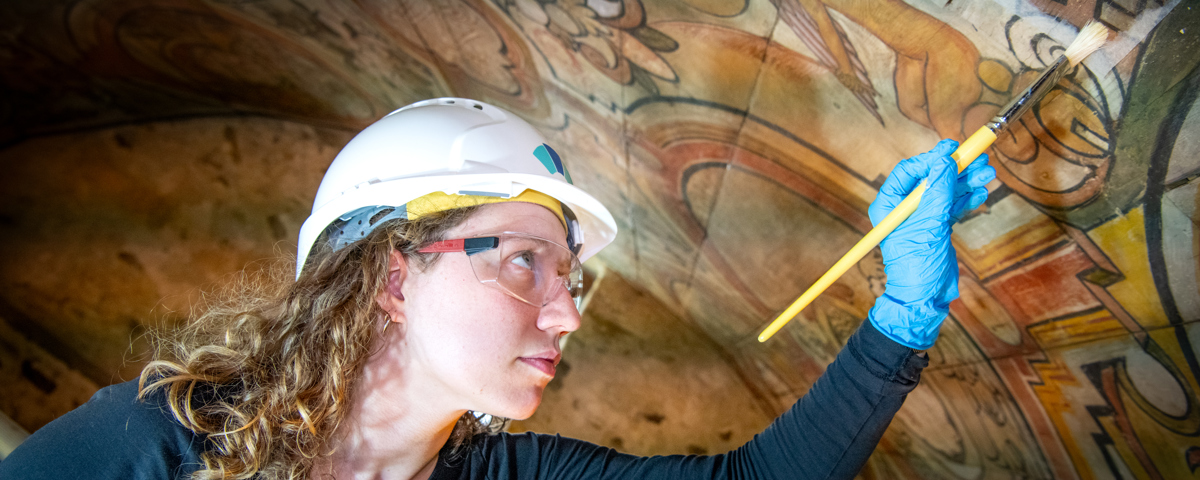
PAINTING conservators from Historic Environment Scotland (HES) visited St Mary’s Church in Grandtully, Perthshire to conserve its unique ceiling.
The church’s ceiling was first painted in the 1600s and is divided into roundels and arches with carious coats of arms, saints and proverbs within them. The central panel is thought to depict the Last Judgement.
The ceiling was commissioned by Sir William Stewart and Dame Agnes Moncrieff, whose arms adorn the ceiling. It is painted in a style typical of Scottish Renaissance, using mainly earth pigments with green and blue accents painted onto a white preparation layer. Due to the organic nature of the ceiling’s timbers and the paint, it is particularly susceptible to changes in the environment, which is monitored as part of condition surveys.
St Mary’s Church was taken into care in 1944. At the time, the ceiling and roof were in poor condition, and they have since been treated repeatedly for insect damage and timber rot. To ensure this unique artwork lasts as long as possible, its condition is now surveyed every five years, and this conservation work was deemed necessary after last year’s survey. Painting conservators Ailsa Murray and Briege Thomas from HES conserved the ceiling by fixing flaking paint into place and cleaning loose dirt and debris.
Ailsa Murray, painting conservator at HES, said, “The ceiling of St Mary’s Church is a unique chapter in Grandtully’s history, and by ensuring we stay abreast of its condition and conserving it when necessary, we can make sure future generations can enjoy it for as long as possible. A project like this requires knowledge of the original techniques used back in the 1600s in order to select the most appropriate approach and material for treatment. It’s also challenging to work against gravity. That makes it a great opportunity for our paintings conservation trainee, Briege, to learn to conserve decoration of this technique and period.”
Briege Thomas, paintings conservation trainee at HES, added, “The opportunity to work on a painted ceiling like this is a rare and exciting one, and I was thrilled to be able to work on this gorgeous hidden gem. When you’re up on the scaffold, you can see all the fine details which aren’t visible from the ground. At that distance, I could really see the brushstrokes of the original paint as well as the different campaigns of restoration the ceiling has undergone over its long history. It was fascinating to be able to connect the original artist, the conservators who have carried out work over the years, and the work we were doing as one long living history of the ceiling and the church itself.
“Learning how to apply techniques on this kind of painted surface was a challenge, but the patience and skill of the experienced conservators I’ve worked with has helped me find my confidence and made me a better conservator. It’s been a privilege to carry out treatments on and work with such nationally historic objects and buildings during my year at HES.”











